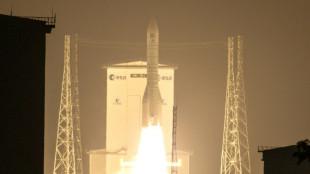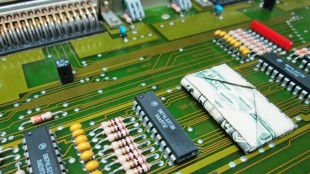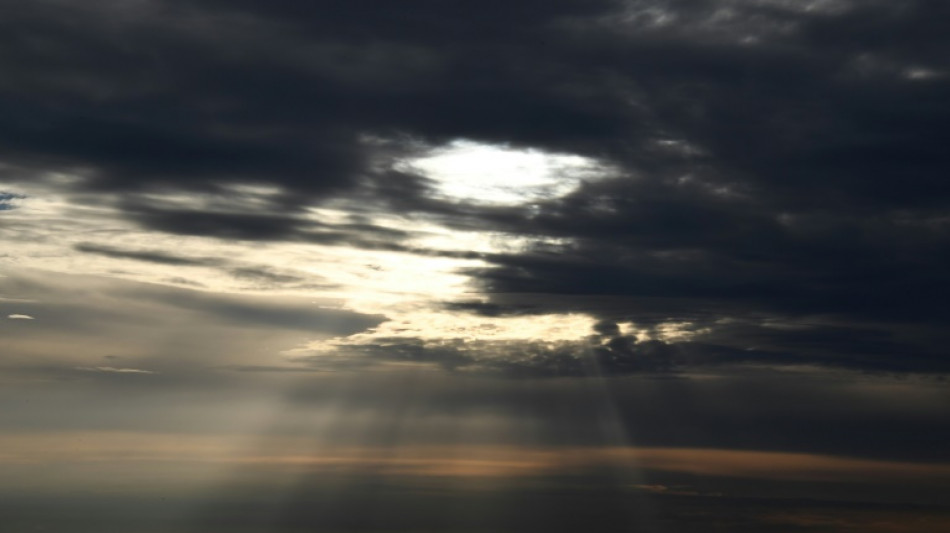
-
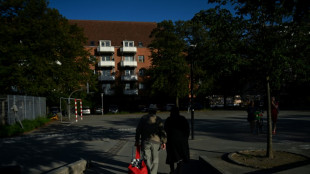 Danish 'ghetto' tenants hope for EU discrimination win
Danish 'ghetto' tenants hope for EU discrimination win
-
Cricket Australia boss slams technology as Snicko confusion continues

-
 Conway and Latham's 323-run opening stand batters hapless West Indies
Conway and Latham's 323-run opening stand batters hapless West Indies
-
Alleged Bondi shooters holed up in hotel for most of Philippines visit

-
 Japan govt sued over 'unconstitutional' climate inaction
Japan govt sued over 'unconstitutional' climate inaction
-
US approves $11 billion in arms sales to Taiwan: Taipei

-
 England battle to save Ashes as Australia rip through top-order
England battle to save Ashes as Australia rip through top-order
-
Guarded and formal: Pope Leo XIV sets different tone

-
 What to know about the EU-Mercosur deal
What to know about the EU-Mercosur deal
-
Trump vows economic boom, blames Biden in address to nation

-
 Conway 120 as New Zealand in command at 216-0 against West Indies
Conway 120 as New Zealand in command at 216-0 against West Indies
-
Taiwan eyes fresh diplomatic ties with Honduras

-
 ECB set to hold rates but debate swirls over future
ECB set to hold rates but debate swirls over future
-
Asian markets track Wall St lower as AI fears mount

-
 EU holds crunch summit on Russian asset plan for Ukraine
EU holds crunch summit on Russian asset plan for Ukraine
-
Australia PM vows to stamp out hatred as nation mourns youngest Bondi Beach victim

-
 Australian PM vows hate speech crackdown after Bondi Beach attack
Australian PM vows hate speech crackdown after Bondi Beach attack
-
Turkmenistan's battle against desert sand

-
 Ukraine's Zelensky in Poland for first meeting with nationalist president
Ukraine's Zelensky in Poland for first meeting with nationalist president
-
England in disarray at 59-3 in crunch Test as Lyon, Cummins pounce

-
 Japan faces lawsuit over 'unconstitutional' climate inaction
Japan faces lawsuit over 'unconstitutional' climate inaction
-
Migrants forced to leave Canada after policy change feel 'betrayed'

-
 What's next for Venezuela under the US oil blockade?
What's next for Venezuela under the US oil blockade?
-
Salvadorans freed with conditional sentence for Bukele protest

-
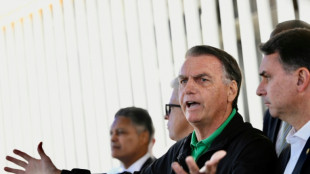 Brazil Congress passes bill to cut Bolsonaro prison term
Brazil Congress passes bill to cut Bolsonaro prison term
-
Cricket Australia boss slams technology 'howler' in Ashes Test

-
 New Zealand 83-0 at lunch on day one of third West Indies Test
New Zealand 83-0 at lunch on day one of third West Indies Test
-
Ecuadorean footballer Mario Pineida shot and killed

-
 US government admits liability in deadly DC air collision
US government admits liability in deadly DC air collision
-
1933 Industries Announces Maturity of Unsecured Convertible Debentures and Encourages Conversion to Support Continued Growth

-
 Ex-podcaster Dan Bongino stepping down as deputy FBI director
Ex-podcaster Dan Bongino stepping down as deputy FBI director
-
Real Madrid scrape past third-tier Talavera in Spanish Cup

-
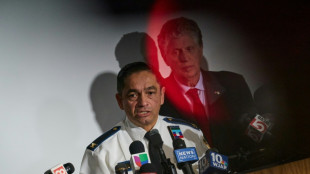 Hunt for US college mass shooter drags into fifth day
Hunt for US college mass shooter drags into fifth day
-
Cherki inspires Man City, Newcastle strike late to reach League Cup semis

-
 Barcelona, Lyon and Chelsea reach Women's Champions League quarters
Barcelona, Lyon and Chelsea reach Women's Champions League quarters
-
Venezuela reacts defiantly to US oil blockade, claims exports unaffected

-
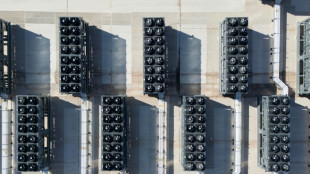 Nasdaq tumbles on renewed angst over AI building boom
Nasdaq tumbles on renewed angst over AI building boom
-
S.Africa expels Kenyans working on US Afrikaner 'refugee' applications

-
 US Congress ends Syria sanctions
US Congress ends Syria sanctions
-
Cherki inspires Man City cruise into League Cup semis

-
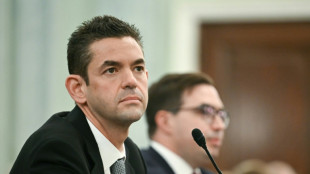 Billionaire Trump nominee confirmed to lead NASA amid Moon race
Billionaire Trump nominee confirmed to lead NASA amid Moon race
-
Mahomes undergoes surgery, could return for 2026 opener: Chiefs

-
 Melania Trump steps into spotlight in Amazon film trailer
Melania Trump steps into spotlight in Amazon film trailer
-
Brazil Senate advances bill that could cut Bolsonaro jail term
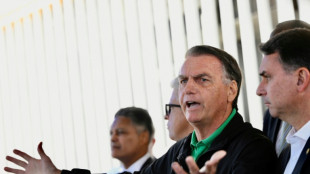
-
 Safonov hero as PSG beat Flamengo in Intercontinental Cup
Safonov hero as PSG beat Flamengo in Intercontinental Cup
-
Oscars to stream exclusively on YouTube from 2029

-
 Oscars to stream exclusively on YouTube from 2029: Academy
Oscars to stream exclusively on YouTube from 2029: Academy
-
CNN's future unclear as Trump applies pressure

-
 Brazil threatens to walk if EU delays Mercosur deal
Brazil threatens to walk if EU delays Mercosur deal
-
Zelensky says Russia preparing for new 'year of war'

| RIO | 1.55% | 77.19 | $ | |
| BTI | -0.21% | 57.17 | $ | |
| SCS | 0.12% | 16.14 | $ | |
| CMSC | -0.34% | 23.26 | $ | |
| BCC | 0.59% | 76.29 | $ | |
| BP | 2.06% | 34.47 | $ | |
| BCE | -0.78% | 23.15 | $ | |
| NGG | 1.8% | 77.16 | $ | |
| JRI | -0.6% | 13.43 | $ | |
| RBGPF | -2.23% | 80.22 | $ | |
| CMSD | -0.43% | 23.28 | $ | |
| RELX | -0.64% | 40.56 | $ | |
| RYCEF | 1.48% | 14.86 | $ | |
| VOD | 0.86% | 12.81 | $ | |
| GSK | -0.14% | 48.71 | $ | |
| AZN | -1.66% | 89.86 | $ |

Unfinished deepsea observatory spots highest-energy neutrino ever
A neutrino with 30 times more energy than any previously seen on Earth was detected by an unfinished observatory at the bottom of the Mediterranean Sea after travelling from beyond this galaxy, scientists said Wednesday.
Neutrinos are the second most abundant particle in the universe. Known as ghost particles, they have no electric charge, almost no mass and effortlessly pass through most matter -- such as our world or bodies -- without anyone noticing.
The most violently explosive events in the universe -- such as a star going supernova, two neutron stars smashing into each other or the almighty suck of supermassive black holes -- create what is called ultra-high-energy neutrinos.
Because these particles interact so little with matter, they glide easily away from the violence that created them, travelling in a straight line across the universe.
When they finally arrive at Earth, neutrinos serve as "special cosmic messengers" offering a glimpse into the far reaches of the cosmos that is otherwise hidden from our view, Italian researcher Rosa Coniglione said in a statement.
However, these ghost particles are extremely difficult to detect. One way is by using water.
When light passes through water, it slows down. This sometimes allows quick-moving particles to overtake light -- while still not going faster than the speed of light.
When this happens, it creates a bluish glow called "Cherenkov light" that can be detected by extraordinarily sensitive sensors.
But to observe this light requires a huge amount of water -- at least one cubic kilometre, the equivalent of 400,000 Olympic swimming pools.
That is why the Cubic Kilometre Neutrino Telescope, or KM3NeT, lies at the bottom of the Mediterranean.
- Think of a ping pong ball -
The European-led facility is still under construction, and spread over two sites. Its ARCA detector, which is interested in astronomy, is nearly 3,500 metres (2.2 miles) underwater off the coast of Sicily.
The neutrino-hunting ORCA detector is in the depths near the French city of Toulon.
Cables hundreds of metres long equipped with photomultipliers -- which amplify miniscule amounts of light -- have been anchored to the seabed nearby. Eventually 200,000 photomultipliers will be arrayed in the abyss.
But the ARCA detector was operating at just a tenth of what will be its eventual power when it spotted something strange on February 13, 2023, according to new research published in the journal Nature.
A muon, which is a heavy electron produced by a neutrino, "crossed the entire detector, inducing signals in more than one-third of the active sensors," according to a statement from KM3NeT, which brings together 350 scientists from institutions in 21 countries.
The neutrino had an estimated energy of 220 petaelectronvolts -- or 220 million billion electron volts.
A neutrino with such a massive amount of energy had never before been observed on Earth.
"It is roughly the energy of a ping pong ball falling from one metre height," Dutch physicist and KM3NeT researcher Aart Heijboer told a press conference.
"But the amazing thing is that all this energy is contained in one single elementary" particle, he added.
For humans to create such a particle would require building the equivalent of a Large Hadron Collider "all around the Earth at the distance of the geostationary satellites", said French physicist Paschal Coyle.
- Blazars as source? -
With this kind of energy, the event that created this neutrino must have been beyond Milky Way.
The exact distance remains unknown, "but what we are quite sure is that it's not coming from our galaxy", said French physicist Damien Dornic.
The astrophysicists have some theories about what could have caused such a neutrino. Among the suspects are 12 blazars -- the incredibly bright cores of galaxies with supermassive black holes.
But more research is needed.
"At the time this event happened, our neutrino alert system was still in development," Heijboer emphasised.
If another neutrino is detected near the end of this year, an alert will be sent in seconds to "all the telescopes around the world so that they can point in that direction" to try to spot the source, he said.
P.Martin--AMWN
